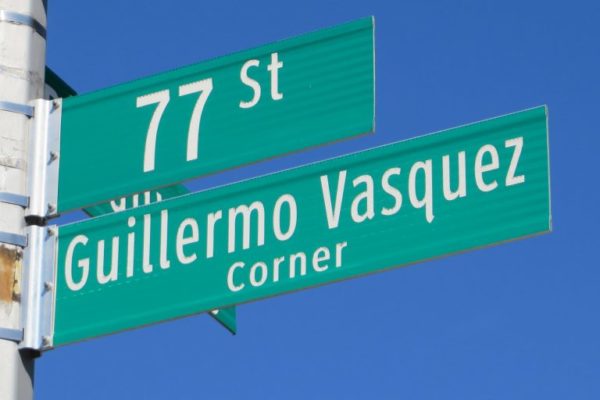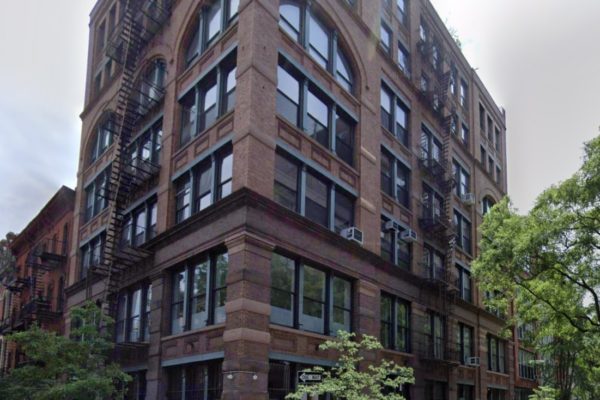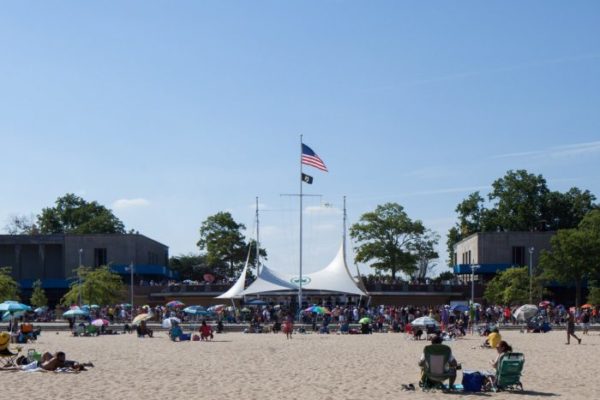
Hispanic Heritage
overview
LGBT Latinas and Latinos have made important political, artistic, and cultural contributions to New York City life since the mid-20th century, particularly after immigration from South America and the Caribbean increased in the 1960s and 1970s.
Cuban-born Tony Segura, perhaps the earliest notable figure of this group, was among the most significant activists of the burgeoning LGBT rights movement in 1950s America; later pioneers include those hailing from or having roots in Puerto Rico (such as co-founders Charles Rice-González and Arthur Avilés of the Bronx Academy of Arts and Dance (BAAD!) and trans activist Sylvia Rivera), Colombia (such as community and AIDS activist Guillermo Vasquez), and Cuba (such as Ana María Simo, co-founder of Medusa’s Revenge and the Lesbian Avengers, and award-winning Off-Broadway playwright Irene Fornés).
This curated collection explores Hispanic-run and/or associated nightlife spots, beaches, and performance venues, as well as artist residences and works of art.
Historic Sites in Hispanic Heritage
From at least 1983 until 2018, Cuban exile writer, playwright, and activist Ana María Simo owned and lived in the third-floor apartment of this tenement building, where she hosted a... Learn More
Fashion illustrator Antonio Lopez and art director Juan Ramos had a 27-year professional collaboration that reinvigorated and redefined fashion illustration at a time when photography was being prioritized for advertising.... Learn More
For nearly 40 years, gay artistic director Max Ferrá led INTAR, a Latino theater company first known as Asociación de Arte Latinoamericano (ADAL) when it was located in this building... Learn More
The award-winning Bronx Academy of Arts and Dance (BAAD!) was founded by dancer/choreographer Arthur Avilés and writer/activist Charles Rice-González, Bronx residents of Puerto Rican descent. Home to the Arthur Avilés... Learn More
A rare surviving Harlem building that hosted drag balls, the Imperial Lodge of Elks (also referred to as the Elks Lodge) was prominently featured in the documentary Paris Is Burning (1990), which... Learn More
Artist Félix González-Torres was known for his conceptual, minimalist art installations that employed everyday objects to reflect on his experiences as an openly gay Cuban-American wrestling with both the personal... Learn More
Guillermo Vasquez was a leading gay rights, AIDS, and Latino community activist in Queens who emigrated from Colombia in 1972. Seventeen years after his 1996 death from AIDS-related complications, this... Learn More
In 1990, Jackson Heights resident Julio Rivera was brutally attacked in the P.S. 69 schoolyard for being gay, and he soon after died at nearby Elmhurst Hospital. A month later,... Learn More
Medusa’s Revenge, the pioneering lesbian multicultural performance and community space, was founded by Cuban exiles Ana María Simo and Magali Alabau in 1976. Located in the vast basement of this... Learn More
The writer Mercedes de Acosta, known for her tell-all autobiography that detailed her love affairs with some of the world’s most famous women, lived in this apartment building in the... Learn More
In 1986, following the death of his partner Leslie Blanchard, Miguel Braschi received an eviction notice from the landlord of the apartment they had shared for ten years because he... Learn More
Orchard Beach, located in Pelham Bay Park and sometimes referred to as “the Bronx Riviera,” has long been a meeting and cruising location for LGBT people of color, in particular.... Learn More
In 1993, the inaugural Queens Pride Parade and Multicultural Festival took place in the historically gay neighborhood of Jackson Heights and was the first such event to be organized in... Learn More
The isolated eastern end of the beach at Jacob Riis Park has been a location for LGBT sunbathing and cruising since the 1940s. Historically, it has been the most popular... Learn More
Cuban-born gay rights activist Tony Segura lived in an apartment in this building facing Riverside Park on the Upper West Side by 1953 and until 1959. While here, he co-founded... Learn More
Formed in 1980, WOW (Women’s One World) Café Theatre is considered one of the premiere centers for lesbian, women’s, and transgender theater in New York. It has performed in this... Learn More
Widely regarded as one of the most important openly gay Puerto Rican writers of the 20th century, Manuel Ramos Otero developed an explicitly gay literature that transcended the canons of... Learn More
With its inaugural broadcast in April 1994, HoMoVISIONES was the first Latino LGBT public access television program in New York City. Between 1995 and 2000, HoMoVISIONES leased an office on... Learn More
In 1994, a coalition of mostly Latina lesbians from three lesbian activist groups executed a months-long protest campaign against homophobic radio show El Vacilón de la Mañana and its parent... Learn More
Recognized as a beacon for the Puerto Rican and Latino communities in New York City, Antonia Pantoja founded various groundbreaking institutions dedicated to educating and advancing minority youths through multiple... Learn More
An influential figure in the Off-Broadway and Off-Off-Broadway movements, Cuban-born playwright and director María Irene Fornés had a 40-year career in the theater and was celebrated for her experimental use... Learn More
Founded in 1973, the Nuyorican Poets Café has operated on the first floor of this building since 1981. It has served as a space to validate and celebrate the complex... Learn More
A key figure in New York’s underground film and theater scene, Puerto Rican-born Mario Montez starred in over 20 movies and was one of Andy Warhol’s superstars. From 1962 to... Learn More
Víctor Fragoso was one of the first Puerto Rican poets and playwrights whose work focused on issues of gender, homosexuality, and the life of the Puerto Rican diaspora in the... Learn More
In December 1986, at the East Village apartment of musician Jorge Socarrás, a political collective of six gay artists finalized its now-iconic Silence = Death poster, featuring the pink triangle,... Learn More































